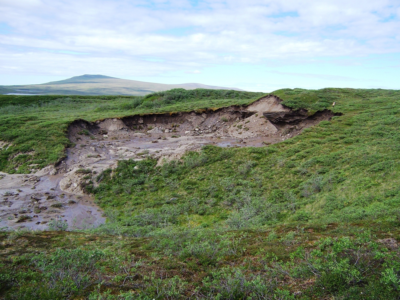
Ecosystem Enrichment in Terrestrial and Aquatic Systems
Ecosystem Enrichment in Terrestrial and Aquatic Systems
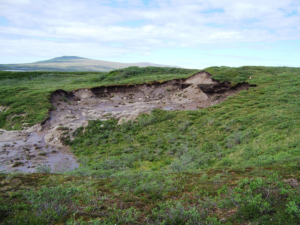
The thermokarst failure at Lake NE-14.
Credit: ARC LTER
Warming will increase nutrient cycling in soils, increasing its fertility and nutrient supplies to streams and lakes. Data from long term fertilization studies at ARC LTER are used to model tundra responses to climate change and disturbance. Long term phosphate fertilization has altered the Kuparuk River’s structure and function, but lake response to fertilization is complicated by lake morphometry – benthic and planktonic communities exhibit different responses in deep versus shallow lakes.

Diversity of Species Interactions in a Changing Arctic
Diversity of Species Interactions in a Changing Arctic
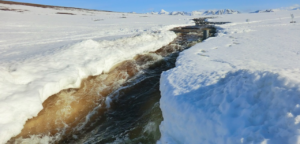
Species must deal with the rapidly melting snow.
Credit: ARC LTER
Microbial communities decreased from soil, to streams, to lakes. About half of the common lake bacteria detected were rare species in soils and headwater streams. Initial inoculation from soils was followed by species sorting downslope. With warming, microbial trophic structure has become more homogenous across soil horizons, and plant biomass and woody plant dominance has increased. Arctic LTER researchers have found that, in lakes, warming caused fish populations to cycle between large and small individuals. Models predicted faster growth, which would require more food, increased reproduction, and decreased generation time.

Indirect Indicators of Rapid Warming in the Arctic
Indirect Indicators of Rapid Warming in the Arctic
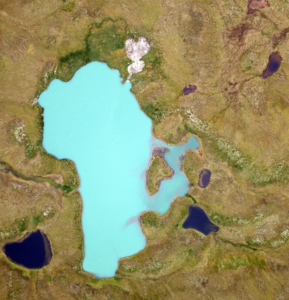
Lake NE-14 and the impact that the mineral soil has had on the lake color (looks like Lake Louise in Banff due to fine glacial flour from the mineral soil). Small lakes next to NE-14 show the normal color of the lake.
Credit: Andrew Balser
Although air temperature at Toolik Lake is too variable for a warming trend to be statistically significant, several long term measures indicate warming. After 40 years, satellite data indicate “greening,” but plot re-harvesting in 2018 does not indicate an increase in shrub abundance. Alkalinity in Toolik Lake has doubled over 40 years, indicating deeper thaw, which allows water to flow through from deeper, more carbonate-rich soil layers. Stream water alkalinity, base cation concentrations, nitrate, and DOC have all increased in ways consistent with permafrost thaw. Dissolved phosphorus has decreased in the Kuparuk River, contrary to expectations.
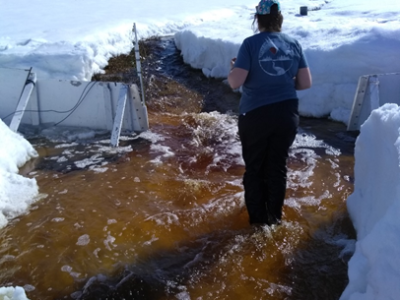
Transport and Transformation of Carbon in Aquatic Systems
Transport and Transformation of Carbon in Aquatic Systems
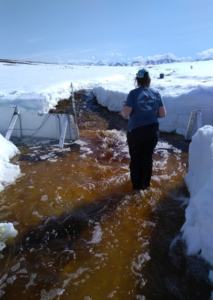
The very high dissolved organic carbon (DOC) content of Imnavait Creek during spring snowmelt.
Credit: ARC LTER
Dissolved organic carbon (DOC) released from thawing permafrost soil can be respired by microbes almost twice as fast if the DOC is first exposed to UV light. Arctic LTER long term data indicate that direct photochemical degradation of DOC from land is the dominant mechanism of DOC oxidation in streams and lakes.
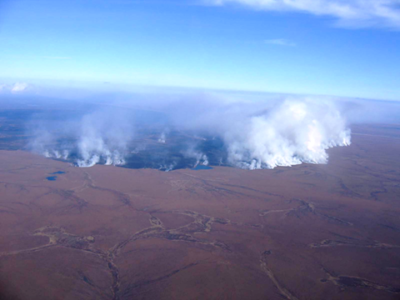
Wildfire and thermokarst: impacts and recovery
Wildfire and thermokarst: impacts and recovery
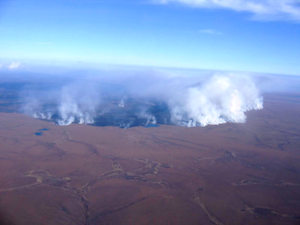
The 2007 Anaktuvuk River fire. We have studied both the thermokarst and fire impacts on ecosystem processes at our Arctic LTER.
Credit: ARC LTER
In 2007, a massive tundra fire released ~2 Pg of carbon into the atmosphere. Climate-driven fire may accelerate warming, potentially offsetting the effects of arctic greening. Long term effects of wildfire on tundra were assessed and incorporated into a model simulating recovery from fire and the loss of ~66 Gg of nitrogen. Tundra darkening caused by fire likely increases thermokarst activity, increasing long term nutrient delivery to streams, and enhancing the biogeochemical connectivity between terrestrial and aquatic ecosystems. The magnitude of this effect is comparable to the ARC LTER fertilization experiments on the Kuparuk River.










